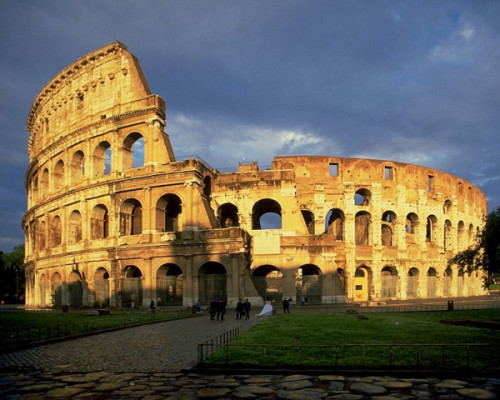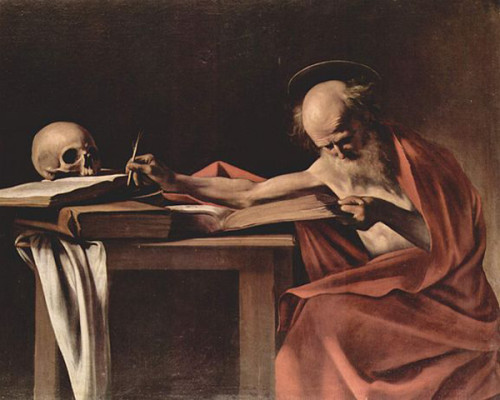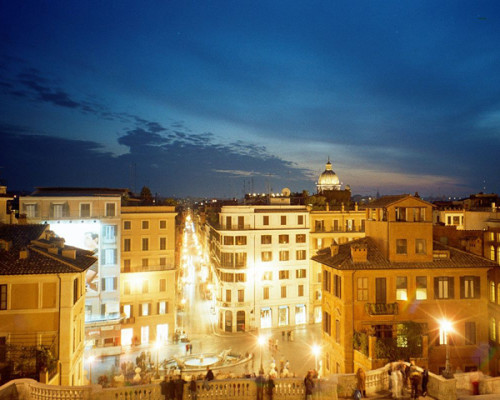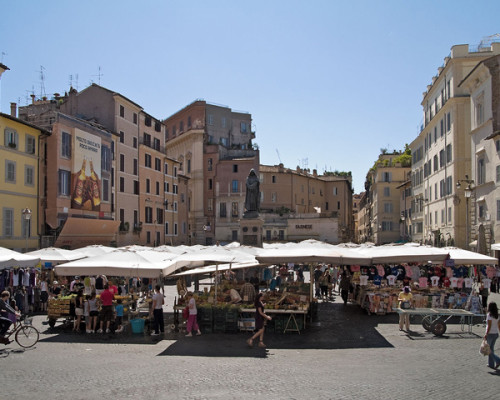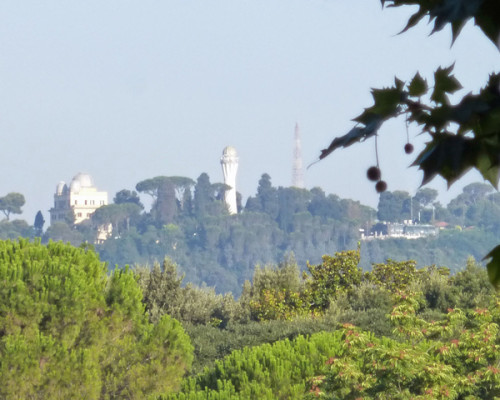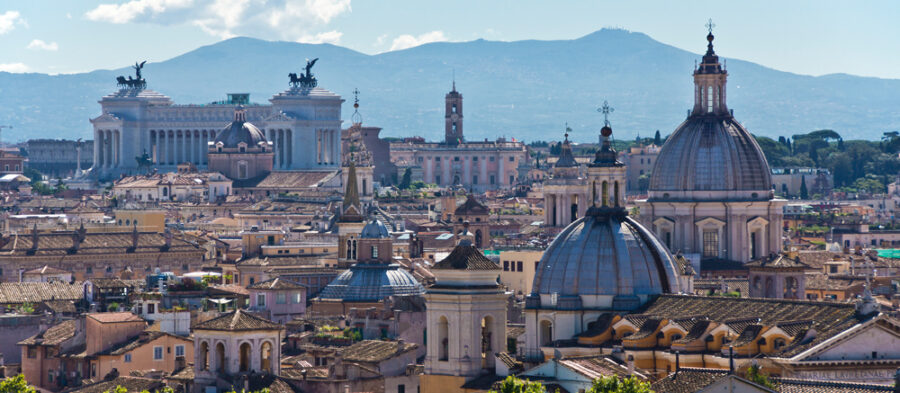
21 Dec Rome
The eternal city of Rome is one of the most significant metropolitan areas in Europe. It pampers visitors with gastronomy, a rich cultural heritage and picturesque views from the seven hills guarding the city.
The city has appr. 2,8 million people, and the whole metropolitan area has over 4 million residents. It lies in the Lazio region of central Italy, on the Tiber river.
Significant areas
- Colosseo. The core of the ancient part of the city. The Colosseum, the Palatine Hill and Piazza Venezia are here.
- The Vatican. The independent Vatican City and the surrounding Prati, Borgo and Monte Mario districts. Here lie the Apostolic Palace with the Sistine Chapel, St. Peter’s Basilica, and The Vatican Museums.
- Trastevere. This nightlife district is full of joie de vivre. Situated on the west bank of the Tiber, it has narrow cobble streets and a romantic atmosphere.
What to do and see in Rome
Colosseum
This legendary amphitheater from the Classical Era is one of the most important attractions in all of Italy. It was constructed between 72-80 CE. It is estimated that it could hold between 50,000 to 80,000 spectators, making it the largest amphitheater to ever be built. It is also depicted on the Italian version of the five-cent euro coin. Attractions include a museum dedicated to Eros, located on the upper floor of the outer wall of the amphitheater, and a network of subterranean passageways once used to transport wild animals and gladiators to the arena. An iconic and majestic sight, and a must-see for history enthusiasts.
Galleria Borghese
This art museum is situated in the Villa Borghese Pinciana, former mansion of the wealthy and powerful Borghese family. Exhibition area includes twenty rooms across two floors and it depicts the Borghese’s private art collection, including e.g. classical antiquities of the 1st–3rd centuries, Classical sculptures, and Renaissance paintings. In the first room, the trompe l’oeil ceiling frescos are real eye-catchers.
Pro tip: With the Roma Pass a visitor has free entry to 1 or 2 museums.
Piazza di Spagna
This beautiful square lies at the bottom of the Spanish steps in Rome. The middle of the square houses its main landmark, the Baroque fountain Fontana della Barcaccia. In the right corner of the Spanish Steps there is a house where the English poet John Keats lived until his death in 1821. It currently houses a museum dedicated to him and his friend Percy Bysshe Shelley.
Other attractions in the area are the Trinità dei Monti church, the Column of the Immaculate Conception and the Babington’s tea room, an excellent place for relaxing.
Campo de’ Fiori
This rectangular square is well-known as a center of vivid nightlife and a meeting place, due to the proximity of several nightclubs and restaurants. It also holds a famous open-air market, where visitors can find cheap souvenirs, flowers and fresh bread among other things. A great place to have a glass of wine or a latte macchiato and relax.
The Pincio Gardens
In the Pincio Gardens a tired visitor can relax and sense the tranquility of the green landscape on the hill. The area also has busts of several famous people lining the pathways. An obelisk lies in the center of the gardens. It is believed to be a copy erected by the Emperor Hadrian as a tribute to his dead favorite friend and lover Antinoüs. The area also features a famous water clock, originally constructed for the Paris Universal Expo in 1867. The balustraded Pincio Terrace offers a divine panoramic view over the city and is a must-see during the sunset.
The Vatican museums and other valuable buildings
The Vatican museums in Rome display masterpieces of paintings, sculptures and other works of art which have been collected by popes throughout centuries. There are several valuable buildings in the Vatican City State. Here are some of them.
The Sistine Chapel has been named after the pope Sixtus IV (1471 – 1484) who ordered it to be built. It was built according to his wishes, and so replaced the medieval fortified hall Cappella Magna, which used to be the meeting place of the Papal Court. It had 200 members at that time. The chapel was also a defensive structure, since there were some tensions between the rulers of Florence and the pope. Turkey, ruled by Muhammad II, also threatened the western coast of Italy. According to some opinions the building is a copy of the Solomon´s temple in Jerusalem destroyed in 70 CE, because the dimensions are exactly same: 40.23 meters in length, 13.40 meters in width and 20.70 meters in height. The main entrance of the chapel is located opposite the smaller entrance used today, and in front of it, there is the Sala Regia, meant for those who come to greet the pope. Arched windows light the chapel. The mosaic floor dating from the 15th century is typical for the period and has remained in its original form. The paintings are made by famous Florentine artists such as Botticelli, Ghirlandaio, Cosimo Rosselli and Signorelli. Some are works of Umbrian painters such as Perugio and Pinturicchio.The most famous works in the chapel are The Creation of Adam in the ceiling and The Last Judgement fresco, both made by Michelangelo.
Pinacoteca, constructed in 1931, is a museum built after the initiative of the pope Pius XI, displaying paintings that have belonged to popes. There are 18 exhibition rooms and the collection consists of paintings from the 12th to the 19th century. Napoleon took a great part of the collections to Paris in 1797, but they were returned to Italy in 1815 after a decision of the Congress of Vienna and with the help of the sculptor Antonio Canova.
Rafael´s rooms (the Vatican rooms) served as the residence of the pope Julius II (1503 – 1513). There were originally paintings of other artists there, but Julius II ordered Rafael to erase the former works and repaint the rooms. The ceiling was painted by Tommaso Laureti in 1585 and it displays the Triumph of Christianity over paganism. It is symbolized by a statue that has fallen and broken.
The Egyptian Museum was founded by the pope Gregory XIV in the Lateran Palace in 1884, and the pope John XXIII moved it to the Vatican in 1970. The museum is filled with original Greek works, Roman copies and sculptures from the first to the third century CE. The most famous works are the copies of the creations of the Greek Myron which were made in about 450 BCE. The collection also has models of famous temples from other religions. Some of these are, for example, Beijing´s Temple of the Sky, The Altar of Confucius and the Shintoist Temple of Nara.
Saint Peter´s Basilica
The emperor Constantine gave permission to build a new church in 324 CE. The idea was to make a tomb for the Apostle Peter in the center of the structure. The church, consecrated in 329 CE, has a nave, four aisles and a transept. The king of the Franks, Charlemagne, was crowned emperor of the Holy Roman Emperor in this church on Christmas Eve in 800 CE. Pilgrims have arrived to this place since the 14th century to pay reverence to the tomb of the Prince of the Apostels. In the middle of the 15th century, pope Nicholas V gave architect Bernardo Rosselino the task to plan a new choir for the church. It became 1.5 meters high. In the early 16th century plans to build a new church in the place of the former were made. The work was given to Donato Bramante, who was one of the greatest architects of the time. After several phases, the work was finally finished in 1612. Michelangelo also played a significant role in this process. A visitor should definitely make themself familiar with Saint Peter´s Treasury, where there are ornaments, statues, papal mitres and different objects; most are gifts from kings or princes. One of the most significant works is the monument of the pope Sixtus IV, designed by the 15th century artist Antonio del Pollaiolo.
Shopping
- Rome has several top-class shopping districts filled with luxurious boutiques: via del Corso, via Cola di Rienzo and via Condotti, with its surrounding streets. Via del Tritone and piazza Campo de’ Fiori are shopping districts with more affordable prices.
- Open on Sundays, Porto Portese is the largest market in Rome, where you can get second hand and new goods, food, antiques and decorative items.
- Euroma2 is an excellent shopping center with three floors, resembling a temple with its glass domes. The mall has chain stores, design shops, cafés and restaurants.
- Castel Romano, located 15 kilometers south of Rome, is a quarter fiiled with design stores, and is a part of the McArthur Glen chain. The area is reminiscent of an ancient Roman village.
- The shopping street Via del Babuino, near the haute couture shops and the Spanish Steps, is known for its antiques, especially furniture and paintings. You will also find antiques from the Via Giulia and Via del Governo Vecchio areas.
Recreation
The Trastevere district has many good cafés and trattorias. The Shari Vari Playhouse (via di Torre Argentina 78) is a club and restaurant, which offers good food and and plays electro and house music, to which you can dance the night away. Freni e Frizioni (via del Politeama 4-6 in Trastevere) is a good aperitivo place for chatting with glasses of grappa, or you can enjoy eating like a Roman. A vegetarian list is also available.
Crazy4Rome offers splendid tours concentrating e.g. food and wine.
Photos: With the CC licence / Tomisti, Andreas Tille, Ikiwaner, Tim Brighton, Myrabella, Lalupa
| Roma, Italia | 12°C scattered clouds | |
Wind
4 m/s, S
Humidity
60%
Pressure
756.06 mmHg | ||
Top 5 in Rome
- Colosseum
- Vatican City and the Apostolic Palace
- Piazza di Spagna
- Having good time in Trastevere
- Galleria Borghese
How To Get To Rome
- The main airport serving the capital is the Leonardo da Vinci-Fiumicino International Airport, in Fiumicino, 35 kilometres southwest of Rome’s city centre. A list of its airlines is here, and its destinations are here.
- The G.B. Pastine/Ciampino International Airport, 12 kilometres south-east from the city centre, serves the affordable airlines Ryanair and Wizz Air. A list of its destinations is here.
- Trenitalia operates trains between Rome and the main Italian cities. The timetables and ticket prices of the Trenitalia are here, and the same for other European train networks is here.
How to get around in Rome
The Roma pass gives a holders full access to public transportation. Public transportation in Rome is operated by the ATAC with buses, trams, trolleybuses, metro and light railway. The journey planner and ticket prices are visible here.
Taxi cab tariffs in Rome:
- If you board a taxi on a weekday between 6:00 AM and 10:00 PM —> € 3.00
- If you board a taxi on a weekend between 6:00 AM and 10:00 PM —> € 4.50
- If you board a taxi at night (between 11:00 PM and 6:00 AM) ————> € 6.50
One should beware of operators who don’t display a licensed meter and ID.
There are 8 railway lines connecting the city to its conurbations and other towns in the Lazio region; these lines are wholly owned and operated by Trenitalia. See timetables and ticket prices here.

